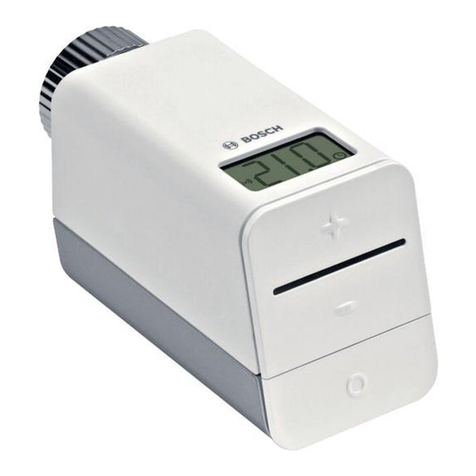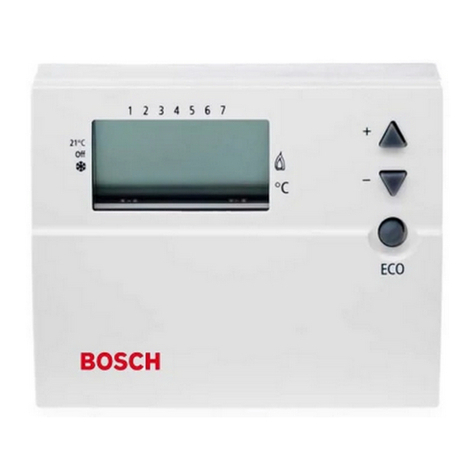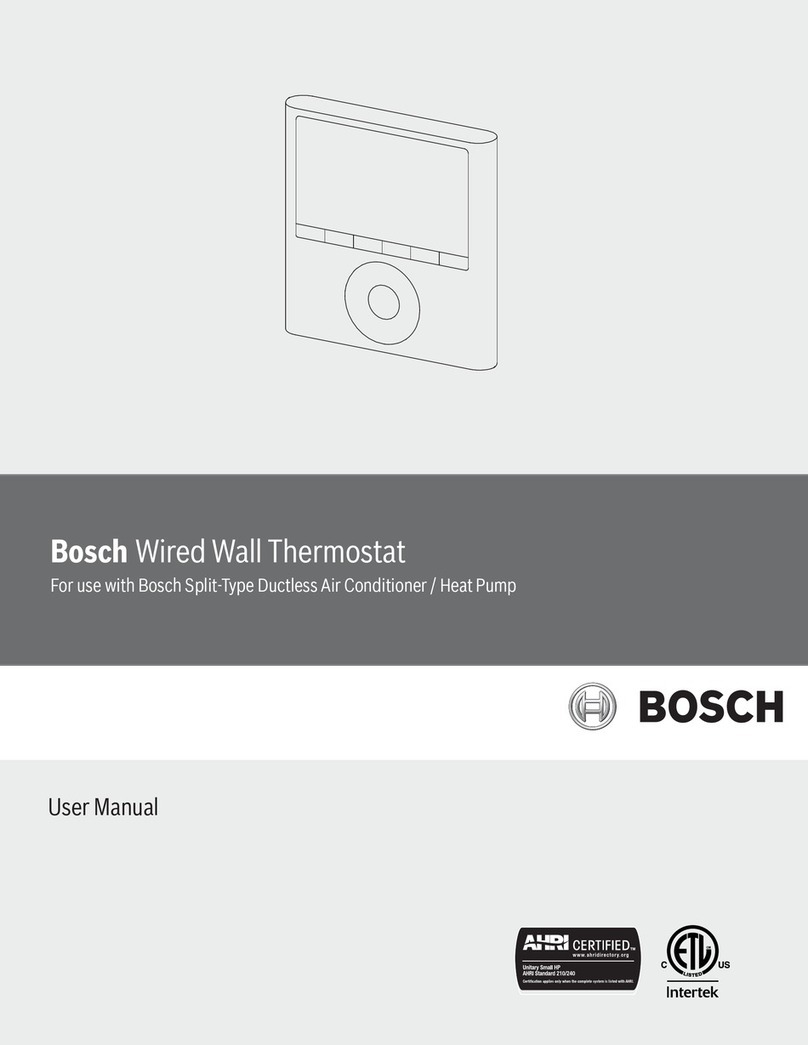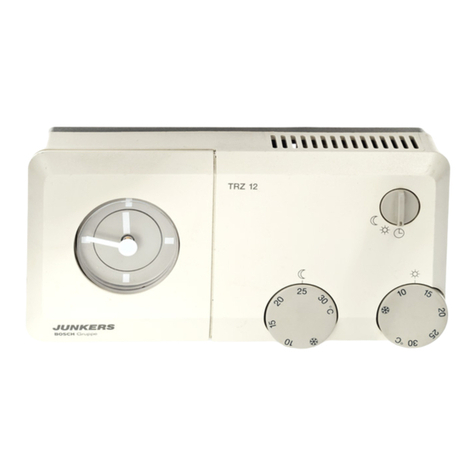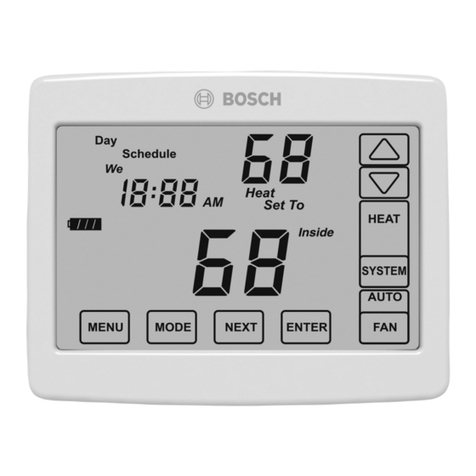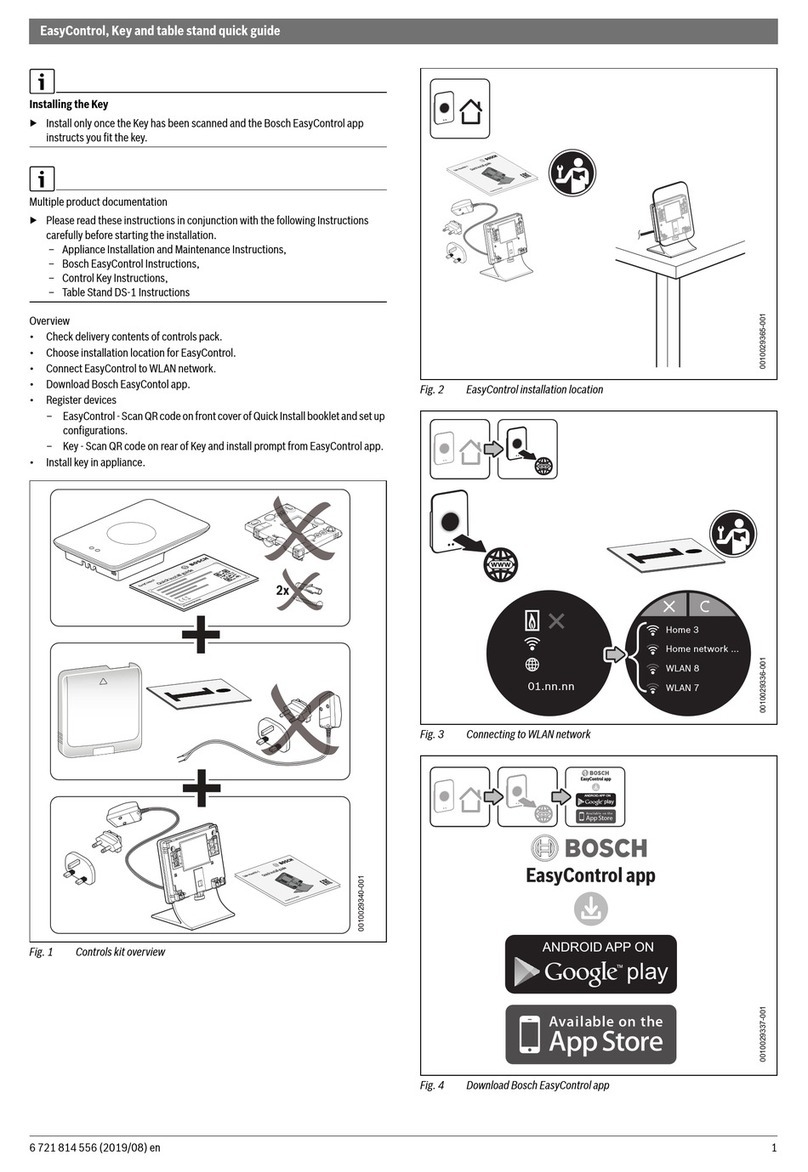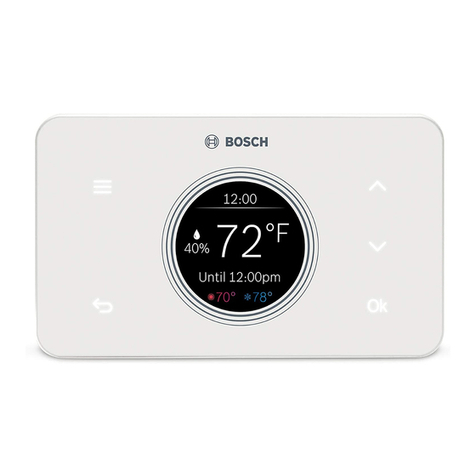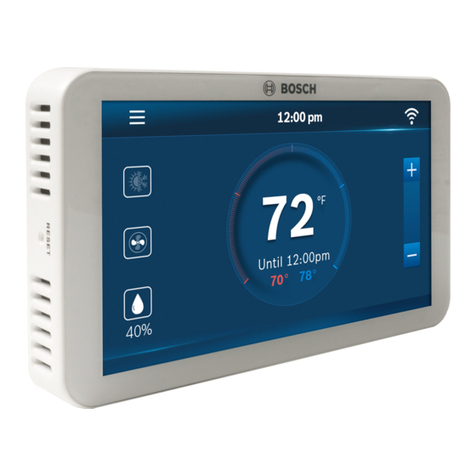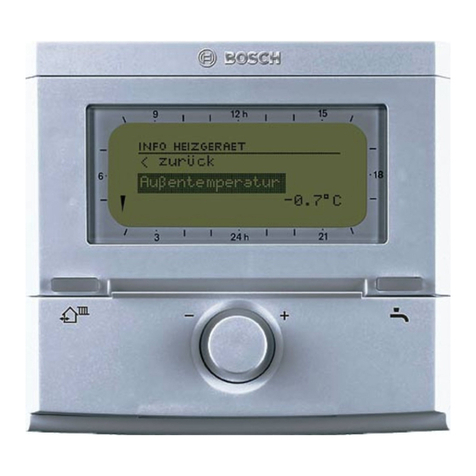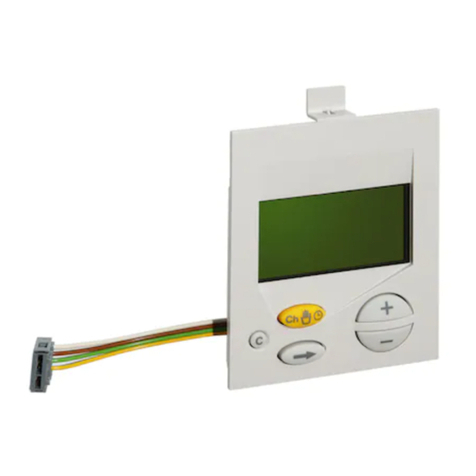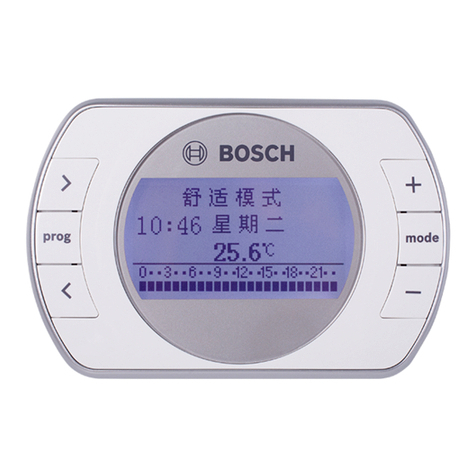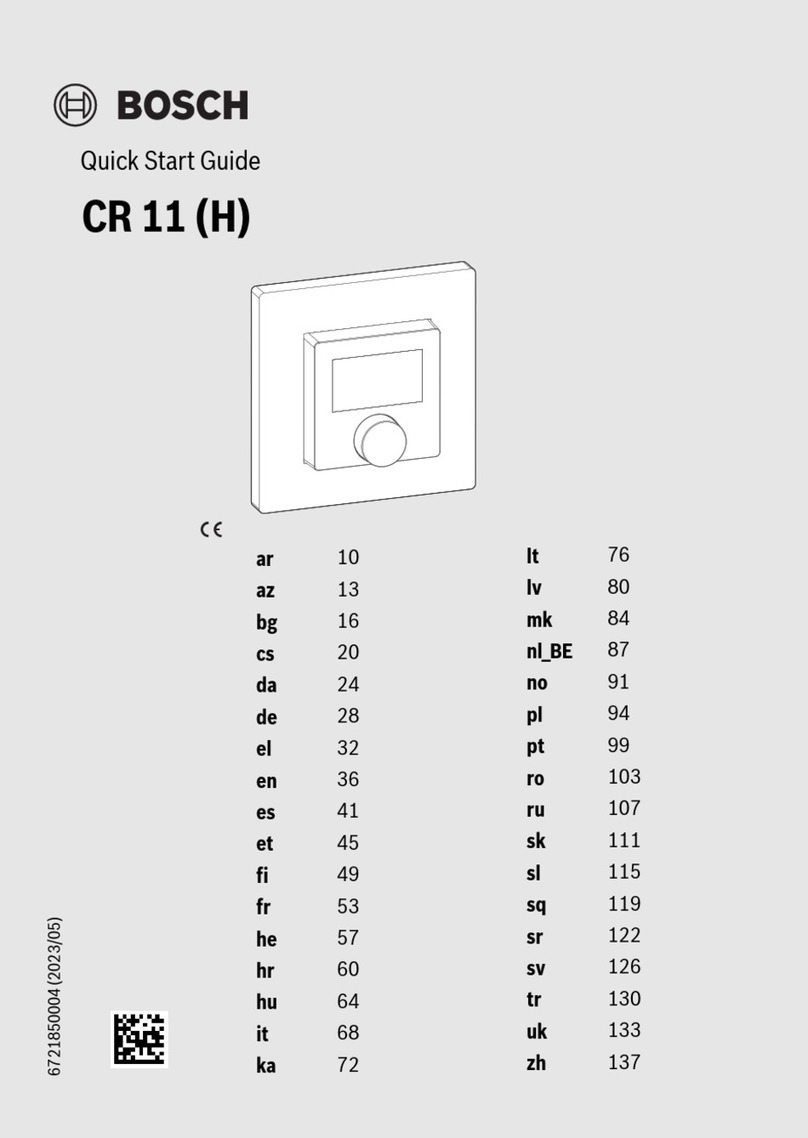
6 720 220 376 Subject to change without prior notice Revised 02-13
4TSTBM3H2CPH6W-A
INSTALLATION TIPS
REMOVING THE PRIVATE LABEL BADGE
Gently slide a scredriver into the bottom edge of the
badge. Gently trun the screwdriver counter
clockwise. The badge should pry off easily. Do not
use force.
All Bosch thermostats use the same
universal magnetic badge. Contact your local
Bosch distributor to learn more about our
free private label program.
WALL LOCATIONS
The thermostat should be installed approximately 4
to 5 feet above the oor. Select an area with average
temperature and good air circulation.
Do not install thermostats in locations that are:
• On an exterior wall
• In direct sunlight
• Where there may be concealed chimneys or pipes
behind the wall
• Close to a window or door leading outside
• Close to objects radiating heat such as replaces,
lighting, space radiators, or any other appliance
• In areas that do not require conditioning
• In dead spots or where drafts can occur (behind
doors or in corners)
• Close to hot or cold air ducts
Pick an installation location that is easy for
the user to access. The temperature of the
location should be representative of the
building.
Installation Tips
THERMOSTAT QUICK REFERENCE
Program Menu Options:
Shows different options
during programming.
Wireless Icon
Temperature:
Indicates the current
system temperature.
Humidity:
Shows the humidity target
setpoint settings and keys.
Low Battery Indicator:
Replace batteries when
this indicator is shown.
Programmable Time
Period Icons:
This thermostat has
4 programmable
time periods per day.
Clean Display:
Pressing CLEAN DISPLAY
will allow 30 seconds to clean
the display. The keys will be
inoperable during this time.
CLEAN will appear if your
contractor has programmed a
filter change reminder. Press
CLEAN when filter has been
replaced to reset the filter
change reminder timer.
Displays the userselectable
setpoint temperature.
System operation indicators:
COOL HEAT FAN
Days of the week and time. Flashes ambient
humidity level. May also flash outside temperature
when used with TSTBM-OTS--TW-A. OUTDOOR will show.
On the back of the thermostat insert 2 AA Alkaline
batteries (included).
Pull the thermostat directly away from the wall to
access the batteries. A firm tug will be required
to remove the thermostat from the subbase
mounted on the wall.
REMOTE indicates a remote
has control of the system.
HOLD is displayed when thermostat
program is permanently overridden.
The COOL, HEAT or FAN icon will display
whenthe COOL, HEAT or FAN is on.
NOTE: The compressor delay feature is
active if these icons are flashing.The
compressor will not turn on until the
5 minute delay has elapsed.
Additional Stages of Heating or Cooling;
+1 represents 1 additional stage of
cooling or heating (2 total); +2 means
2 additional stages of heating (3 total)
System Information:
Shows which zone or zones are
controlling your system. Shown only
when one or more indoor sensors
TSTBM-RRS--TW-A are connected.

